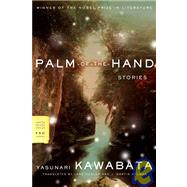
Note: Supplemental materials are not guaranteed with Rental or Used book purchases.
Purchase Benefits
What is included with this book?
| Editorial Note | ix | ||
| Translators' Notes | xi | ||
| A Sunny Place (Hinata, 1923) | 3 | (3) | |
| The Weaker Vessel (Yowaki utsuwa, 1924) | 6 | (2) | |
| The Girl Who Approached the Fire (Hi ni yuku kanojo, 1924) | 8 | (2) | |
| A Saw and Childbirth (Nokogiri to shussan, 1924) | 10 | (3) | |
| The Grasshopper and the Bell Cricket (Batta to suzumushi, 1924) | 13 | (5) | |
| The Ring (Yubiwa, 1924) | 18 | (2) | |
| Hair (Kami, 1924) | 20 | (2) | |
| Canaries (Kanariya, 1924) | 22 | (2) | |
| Harbor Town (Minato, 1924) | 24 | (1) | |
| Photograph (Shashin, 1924) | 25 | (2) | |
| The White Flower (Shiroi hana, 1924) | 27 | (3) | |
| The Incident of the Dead Face (Shinigao no dekigoto, 1925) | 30 | (2) | |
| Glass (Garasu, 1925) | 32 | (4) | |
| The O-Shin Jizo (Oshin jizo, 1925) | 36 | (4) | |
| The Sliding Rock (Suberi iwa, 1925) | 40 | (4) | |
| Thank You (Arigato, 1925) | 44 | (4) | |
| The Silverberry Thief (Gumi nusutto, 1925) | 48 | (4) | |
| Summer Shoes (Natsu no kutsu, 1926) | 52 | (3) | |
| A Child's Viewpoint (Kodomo no tachiba, 1926) | 55 | (1) | |
| Love Suicides (Shinju, 1926) | 56 | (2) | |
| The Maidens' Prayers (Shojo no inori, 1926) | 58 | (3) | |
| Toward Winter (Fuyu chikashi, 1926) | 61 | (5) | |
| The Sparrow's Matchmaking (Suzume no baishaku, 1926) | 66 | (3) | |
| The Hat Incident (Boshi jiken, 1926) | 69 | (4) | |
| One Person's Happiness (Hitori no kofuku, 1926) | 73 | (4) | |
| There Is a God (Kami imasu, 1926) | 77 | (4) | |
| Goldfish on the Roof (Okujo no kingyo, 1926) | 81 | (3) | |
| Mother (Haha, 1926) | 84 | (4) | |
| Morning Nails (Asa no tsume, 1926) | 88 | (2) | |
| The Young Lady of Suruga (Suruga no reijo, 1927) | 90 | (3) | |
| Yuriko (Yuri, 1927) | 93 | (2) | |
| God's Bones (Kami no hone, 1927) | 95 | (3) | |
| A Smile Outside the Night Stall (Yomise no bisho, 1927) | 98 | (5) | |
| The Blind Man and the Girl (Mekura to shojo, 1928) | 103 | (5) | |
| The Wife's Search (Fujin no tantei, 1928) | 108 | (6) | |
| Her Mother's Eye (Haha no me, 1928) | 114 | (2) | |
| Thunder in Autumn (Aki no kaminari, 1928) | 116 | (2) | |
| Household (Katei, 1928) | 118 | (3) | |
| The Rainy Station (Shigure no eki, 1928) | 121 | (9) | |
| At the Pawnshop (Shichiya nite, 1929) | 130 | (5) | |
| Lavatory Buddhahood (Setchin jobutsu, 1929) | 135 | (3) | |
| The Man Who Did Not Smile (Warawanu otoko, 1929) | 138 | (6) | |
| Samurai Descendant (Shizoku, 1929) | 144 | (4) | |
| The Rooster and the Dancing Girl (Niwatori to odoriko, 1930) | 148 | (5) | |
| Makeup (Kesho, 1930) | 153 | (3) | |
| The Bound Husband (Shibarareta Otto, 1930) | 156 | (4) | |
| Sleeping Habit (Nemuriguse, 1932) | 160 | (2) | |
| Umbrella (Amagasa, 1932) | 162 | (2) | |
| Death Mask (Desu masuku, 1932) | 164 | (3) | |
| Faces (Kao, 1932) | 167 | (2) | |
| The Younger Sister's Clothes (Imoto no kimono, 1932) | 169 | (6) | |
| The Wife of the Autumn Wind (Akikaze no nyobo, 1933) | 175 | (3) | |
| A Pet Dog's Safe Birthing (Aiken anzan, 1935) | 178 | (5) | |
| Hometown (Sato, 1944) | 183 | (2) | |
| Water (Mizu, 1944) | 185 | (2) | |
| The Silver Fifty-Sen Pieces (Gojusen ginka, 1946) | 187 | (6) | |
| Tabi (Tabi, 1948) | 193 | (3) | |
| The Jay (Kakesu, 1949) | 196 | (6) | |
| Bamboo-Leaf Boats (Sasabune, 1950) | 202 | (3) | |
| Eggs (Tamago, 1950) | 205 | (5) | |
| The Snakes (Hebi, 1950) | 210 | (5) | |
| Autumn Rain (Aki no ame, 1962) | 215 | (4) | |
| The Neighbors (Rinjin, 1962) | 219 | (4) | |
| Up in the Tree (Ki no ue, 1962) | 223 | (3) | |
| Riding Clothes (Jobafuku, 1962) | 226 | (4) | |
| Immortality (Fushi, 1963) | 230 | (4) | |
| Earth (Chi, 1963) | 234 | (5) | |
| The White Horse (Shirouma, 1963) | 239 | (4) | |
| Snow (Yuki, 1964) | 243 | (4) | |
| Gleanings from Snow Country (Yukigunisho, 1972) | 247 |
The New copy of this book will include any supplemental materials advertised. Please check the title of the book to determine if it should include any access cards, study guides, lab manuals, CDs, etc.
The Used, Rental and eBook copies of this book are not guaranteed to include any supplemental materials. Typically, only the book itself is included. This is true even if the title states it includes any access cards, study guides, lab manuals, CDs, etc.